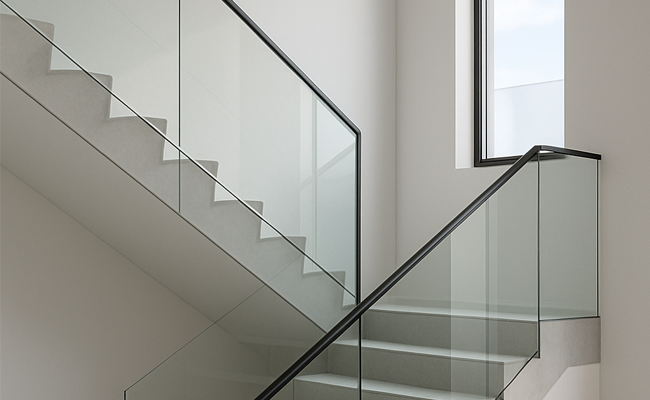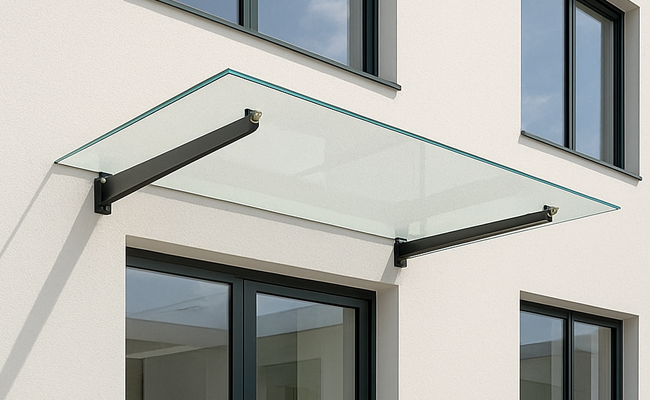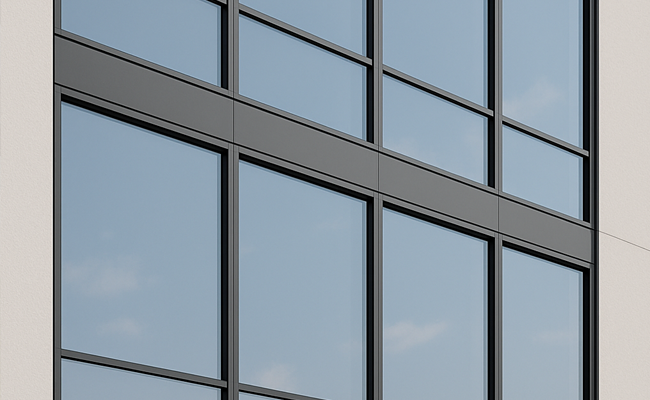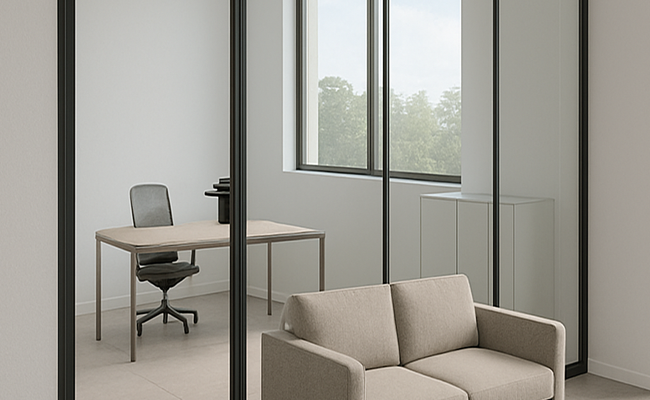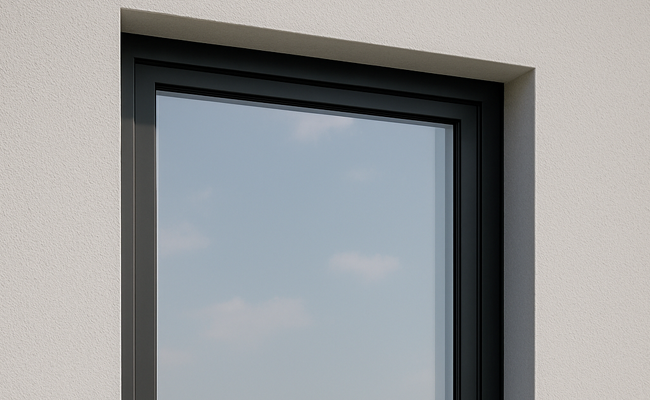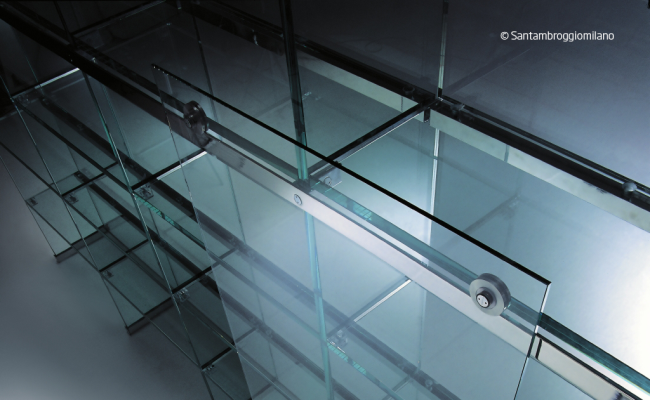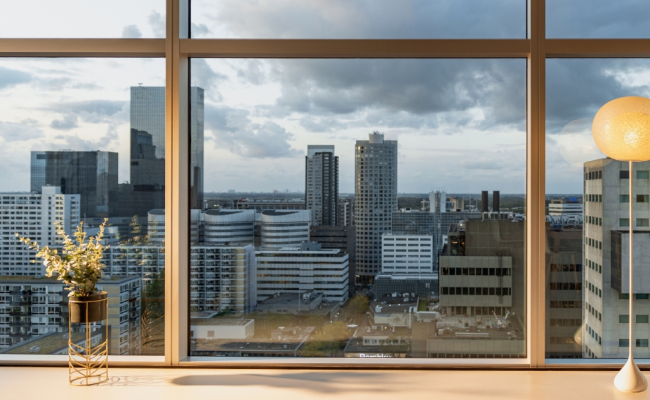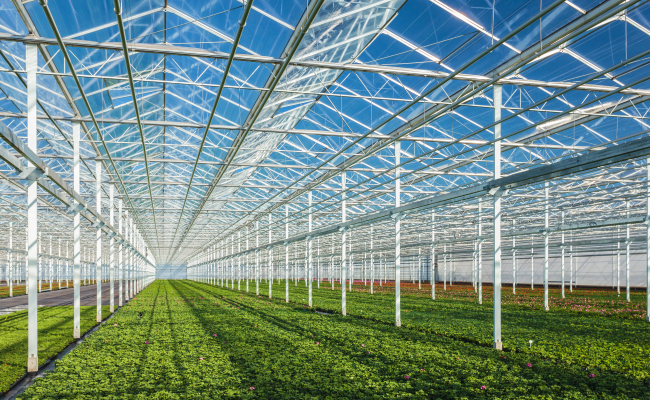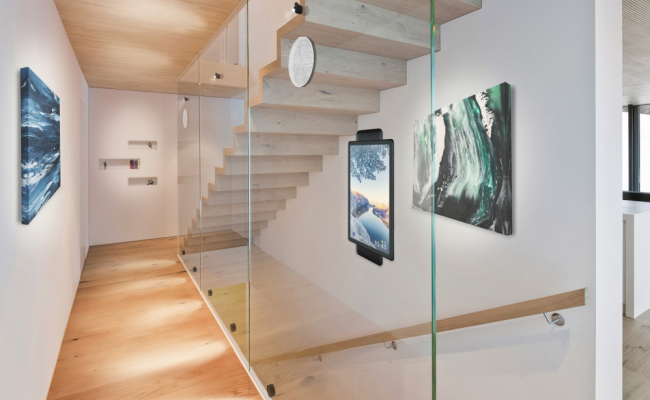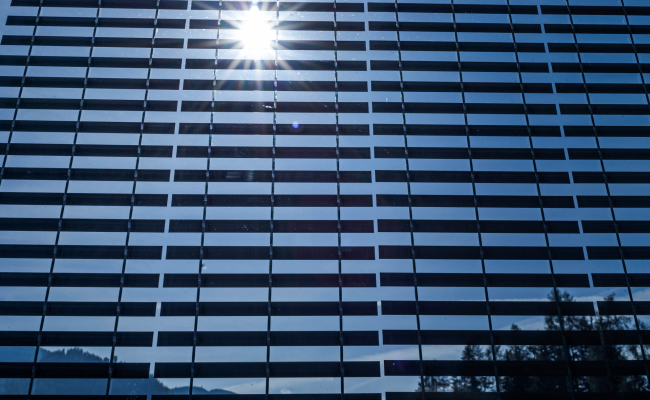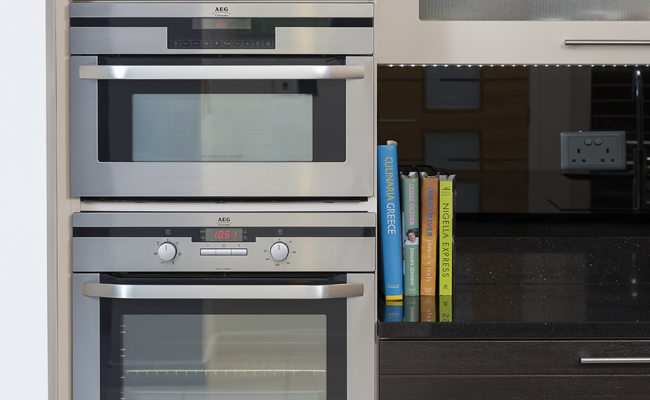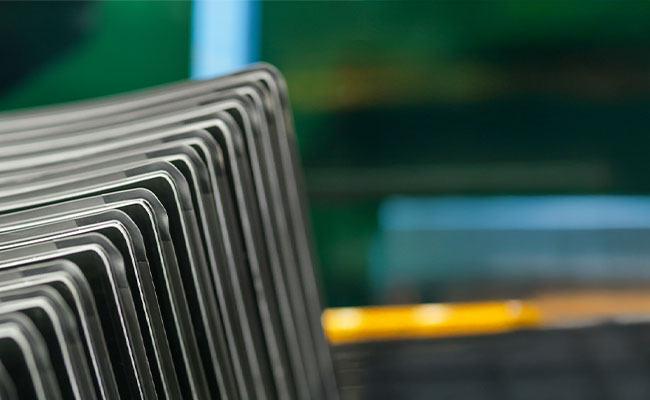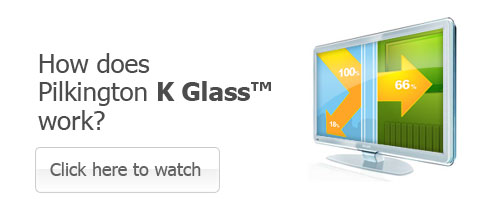Thermal Insulation FAQs
Below you will find the most frequently asked questions about thermal insulation and energy-efficient glass.
Heat always flows towards the cold. Therefore, window glass without a low-e coating will absorb the heat from your home and radiate it onto the colder outside surface, where it is lost. Low-e glass has a special coating which is a poor radiator of heat and does not allow heat to be transferred to the outside. Instead, the low-e coating actually reflects the heat back into your room.
A Pilkington Insulight™ Therm unit is a combination of a product from our low-emissivity glass range such as Pilkington K Glass™ or Pilkington Optitherm™ combined with a clear float glass in a double glazed unit.
I works the following way:
- Pilkington K Glass™ or Pilkington Optitherm™ is coated so that it becomes selective for which wavelengths of energy it allows to pass and which it reflects. Most of the sun’s energy arrives at the low-e window as short wave radiation and that is allowed to pass through the low-e coating ie. it is not very reflective to these wavelengths.
- Some of the energy is absorbed by the glass as it passes through. The absorbed energy heats the glass. The energy that has entered the living space is also absorbed by the items in the room such as furniture and carpets. These items also get warmed by the energy.
- Warm items re-radiate the energy and this includes fires and radiators within the room as well as the warmed furniture. This re-radiated energy is no longer short wave radiation so the energy now travels back towards the low-e window as long wave radiation.
- The low-e glass does not let the longer wavelength radiation emit from the coated low-e surface and is an effective reflector. The energy that has entered the room and the heat energy that was already present is reflected back from the low-e glass. Even the glass that was heated by the energy passing through it emits long wave energy and it can send it in two directions. Some is sent back out into the atmosphere and some to the inside of the building.
- The result is a neutral appearance glass that lets energy in and helps prevent heat getting out.
By placing low-e glass into a double glazed unit, the individual glass pane temperatures change. As more heat is retained, the outer pane of glass is not heated as much by escaping energy and the inner pane is keeping more heat in and becomes warmer. This has two effects. There are less cold draughts from convection near the windows and the risk of condensation on the glass is reduced. In this way, low-e glazing not only prevents heat loss, but also encourages warmth during the colder months of the year.
Ug-value of energy-efficient glazing
The rate at which glass transmits heat out of the building is measured by the Ug-value. Ug-value is measured in W/m2K (Watts per square metre per Kelvin temperature difference). The larger the figure, the greater the heat loss.
Example of heat loss saving
If you have a house that has 20 m2 of glass and its Ug-value is 5.8 (single glazing) and it is 10 degrees colder outside than inside then you will be losing 1160 Watts (=5.8 X 20 X 10). This is a rate of loss greater than one bar on an electric fire. By replacing the glass with a low-e product the Ug-value might become 1.5 so you are now only losing 300 Watts (almost a quarter of the heat loss).
Improved window seals and draft proofing will also improve the overall insulation properties of the window saving even more energy. The other aspect of energy efficiency is the ability of the glass to transmit heat. The Ug-value of the property and the rate at which heat is allowed into the building is a more thorough evaluation of the effectiveness of the glass. The total transmittance of the glass (or more correctly the total solar heat transmittance or g-value) is the value given to the glass. The higher the figure the better for gaining heat which is the objective in most domestic situations. Low-e glass types can be compared using the Ug-value and the g-value.
Shading Coefficient
Another measure that is used for comparing low-e glass types is the shading coefficient. Shading coefficients compare the solar heat transmittance properties of the glass by short and long wavelengths. The proportion of energy that each glass allows through is compared back to a standardised thin piece of clear glass with known properties. Shading coefficients are given for the short wave energy, long wave energy and the two combined into the total shading coefficient. A glass with a relatively high long wave shading coefficient will have absorbed a lot of energy and be re-radiating it into the building. It is likely to be a coloured, highly absorbing glass. This information is of particular interest to architects and also heating and ventilation engineers, as they can calculate the heating and cooling loads for a building when they know how much energy will either come through or escape from a building.
The Government approved Window Energy Ratings scheme rates windows on a scale from G being the lowest up to A+ being the most energy-efficient windows. The current building regulations concerning the energy efficiency of homes require that windows are a minimum of band C however most window companies are aiming to provide the homeowner with the highest energy efficiency achievable at a good price.
How to get an improved Window Energy Rating - Aiming for A-rated windows
The type of low-e glass used in the window glazing is not the only factor affecting the Window Energy Rating of an energy efficient window. Other factors bring about significant changes in the rating and these can be achieved by:
- improve the window g-value (amount of free heat from the sun the window lets in) without compromising the U-value, or
- improve the window U-value (the degree to which it stops heat escaping from your home) without reducing its g-value.
Using inert gas, such as argon, in the cavity and/or a so-called warm edge spacer bar will improve the insulating glass Ug-value. Using a low-iron glass such as Pilkington Optiwhite™ will improve the g-value. The magnitude of the benefits will depend on non-glass factors such as the frame U-value and percentage frame factor (proportion of frame to glass). Therefore, by combining the best available technologies, it has been proved commercially possible to achieve A-rated windows without the need for triple glazing or costly krypton filling.
With Window Energy Ratings, we have a system which recognises the positive energy gains through windows. This means that windows can be acknowledged as contributors to positive energy efficiency of buildings meaning that legislators and specifiers can stop thinking in terms of reducing window areas. This means the extensive use of glass can easily be incorporated in energy efficient homes.
Window Energy Ratings systems and A-rated windows – Global trends
Window Energy Ratings and A-rated windows are not new ideas nor are they simply British ideas. Window energy rating programmes are already in place in the USA, Canada and Australia & New Zealand as well as other countries. Many other countries are already working on similar schemes to provide energy rating of windows and doors.
The reasons for this are clear; buildings are one of the major users of energy and one of the potential areas of losses in any building is via the glazing. Improving the energy efficiency of windows and doors gives large and lifelong improvements in the energy efficiency of buildings. This has a direct and quantifiable impact on energy-use. Energy-usage is not simply a British problem and countries all over the world are using Window Energy Ratings to improve energy-performance and select A-rated windows for the application.
Window Energy Ratings
The Window Energy Rating (WER) tells you how energy-efficient your windows are. The rating system is based on a scale of G to A+, with A+ windows being the most energy-efficient. The scheme is similar to those seen on household appliances, white goods and light bulbs.
Considering the fact that up to 25% of the heat within most homes escapes through the windows, it’s worth considering installing new energy-efficient windows in order to save energy and hence money off your energy bills. More and more people are opting for A or A+ rated windows as an energy saving measure.
Choosing windows incorporating a low-emissivity glass such as the well known Pilkington K Glass™ or Pilkington Optitherm™ in your glazing helps to prevent heat from escaping through the windows, reflecting heat back into your home. These energy saving glass products may be incorporated into double glazing such as Pilkington Insulight™ Therm and helps windows of any frame type to achieve the highest levels of Window Energy Rating.
What is a Window Energy Rating?
A window"s rating is determined by a formula which takes into account the total solar heat transmittance, the amount of the sun"s heat which can pass through the glass (usually referred to as g-value); the U-value of the whole window (frame and glass combined), how well the window keeps the heat in your home; and the air infiltration through the window seals. To make the Rating standard across all products, a standard window size and configuration is used. The resulting value is then placed into a band on the scale G-A, with A-rated windows being the most energy-efficient. This makes the system of rating windows consistent with other products which have energy performance labels such as those that will be familiar on washing machines, light bulbs and refrigerators.
Who gets a Window Energy Rating (WER)?
A Window Energy Rating and label apply to a whole window (ie the frame and the glass). They do not apply to either the frame or the system or the glass individually. Therefore it is at the point at which all these components come together to produce a whole window that the Rating and label are obtained. Usually it would therefore be the window installer"s product which is rated, although in the case of a factory-glazed window it could be the window manufacturer"s product. Ask your window installer for more information on this.
Glass specification
Window Energy Ratings take into account both the positive (solar gain) and negative (heat loss) aspects of the glazing used. Products from our low-emissivity glass range have different properties however, when incorparated into Pilkington Insulight™ Therm double glazing, all will meet or exceed the requirements of the building regulations and up to band A+ in the appropriate framing systems.
Low-emissivity glass (or low-e glass as it is commonly referred to) is a type of energy-efficient glass designed to prevent heat escaping through your windows to the cold outdoors. Low-e glass such as Pilkington K Glass™ or Pilkington Optitherm™ has an invisible coating which substantially reduces heat transfer and reflects interior heat back into your room.
Unfortunately, many older double glazed units do not contain low-emissivity glass and are therefore not energy-efficient. By replacing your existing window glass with low-e glazing, you can improve the energy efficiency of your home, reduce your monthly bills and decrease the size of your carbon footprint. Pilkington Insulight™ Therm low-e glazing units can make your home more than twice as energy-efficient in comparison to older double glazing with no low-e coating.
Low-e glass is essential for rooms or buildings with a high proportion of windows or glass doors, such as conservatories and sun rooms. The use of low-e glazing helps to retain heat even in winter, allowing you to comfortably use these rooms for more months of the year. Low-e glass is also recommended for north or east facing windows, where a larger proportion of heat loss would be expected. For south and west facing glazing where overheating can become a problem in the summer months, your installer may recommend the use of solar control glass.
Benefits of Energy-efficient Glazing
Installing windows containing energy-efficient double or triple glazed units provides you with many benefits:
- improves the energy-efficiency of your home,
- reduces the amount of energy you use,
- saves you money on your heating bills,
- more effective than single glazing or standard double glazing,
- provides you with the quality and reassurance you would expect from a leading brand,
- manufactured to the highest European quality standards,
- available from window installers countrywide in a range of frame types.
Low-emissivity glass (or low-e glass as it is commonly referred to) is a type of energy-efficient glass designed to prevent heat escaping through your windows to the cold outdoors. Low-e glass such as Pilkington K Glass™ or Pilkington Optitherm™ has an invisible coating which dramatically reduces heat transfer and reflects interior heat back into your room.
Unfortunately, many older double glazed units do not contain low-emissivity glass and are therefore not energy-efficient. By replacing your existing window glass with low-e glazing, you can improve the energy efficiency of your home, reduce your monthly bills and decrease the size of your carbon footprint. Pilkington low-e glazing units can make your home more than twice as energy-efficient in comparison to older double glazing with no low-e coating.
Low-e glass is essential for rooms or buildings with a high proportion of windows or glass doors, such as conservatories and sun rooms. The use of low-e glazing helps to retain heat even in winter, allowing you to comfortably use these rooms for more months of the year. Low-e glass is also recommended for north or east facing windows, where a larger proportion of heat loss would be expected. For south and west facing glazing where overheating can become a problem in the summer months, your installer may recommend the use of solar control glass.
NSG Group offers a range of single low-emissivity glass products and also double and triple glazed units incorporating low-e glass:
Single low-emissivity glass:
- Pilkington K Glass™ N
- Pilkington Energy Advantage™
- Pilkington K Glass™ N OW
- Pilkington Optitherm™ S3
- Pilkington Optitherm™ S1A
Double or triple low-emissivity glazing:
- Pilkington Insulight™ Therm
- Pilkington Insulight™ Therm Triple
- Pilkington Spacia™
Save money with Low-e glazing
It may surprise you to learn that up to 25% of the heat in your home can be lost through your windows. Without energy-efficient glazing, you are effectively throwing your money out of the window.
Did you know that by installing low-e windows, you can significantly improve your Window Energy Ratings and reduce the amount of energy lost through your windows by up to 75%! Considering these figures and the cost of fuel today, it is easy to see why more and more people are opting for A-rated windows by incorporating low-e glass into their existing window frames.
Why not use energy-savings calculator to see for yourself just how much you can save by installing a product from our low-e glazing range.
How Low-emissivity Glass works
Heat always flows towards the cold. Therefore, window glass without a low-e coating will absorb the heat from your home and radiate it onto the colder outside surface, where it is lost. Low-e glass has a special coating which is a poor radiator of heat and does not allow heat to be transferred to the outside. Instead, the low-e coating actually reflects the heat back into your room.
Pilkington K Glass™ or Pilkington Optitherm™ is coated so that it becomes selective for which wavelengths of energy it allows to pass and which it reflects. Most of the sun’s energy arrives at the low-e window as short wave radiation and that is allowed to pass through the low-e coating i.e. it is not very reflective to these wavelengths. Some of the energy is absorbed by the glass as it passes through. The absorbed energy heats the glass. The energy that has entered the living space is also absorbed by the items in the room such as furniture and carpets. These items also get warmed by the energy. Warm items re-radiate the energy and this includes fires and radiators within the room as well as the warmed furniture. This re-radiated energy is no longer short wave radiation. The energy now travels back towards the low-e window as long wave radiation. The low-e glass does not let the longer wavelength radiation emit from the coated low-e surface and is an effective reflector. The energy that has entered the room and the heat energy that was already present is reflected back from the low-e glass. Even the glass that was heated by the energy passing through it emits long wave energy and it can send it in two directions. Some is sent back out into the atmosphere and some to the inside of the building. The result is a neutral appearance glass that lets energy in and helps prevent heat getting out.
By placing low-e glass into a double glazed unit, the individual glass pane temperatures change. As more heat is retained, the outer pane of glass is not heated as much by escaping energy and the inner pane is keeping more heat in and becomes warmer. This has two effects. There are less cold draughts from convection near the windows and the risk of condensation on the glass is reduced. In this way, low-e glazing not only prevents heat loss, but also encourages warmth during the colder months of the year.
The rate at which glass transmits heat out of the building is measured by the Ug value. The units for the Ug value are W/m2K (Watts per square metre per Kelvin temperature difference). The larger the figure, the greater the heat loss. If you have a house that has 20 m2 of glass and its Ug value is 5.8 (single glazing) and it is 10 degrees colder outside than inside then you will be losing 1160 Watts (=5.8 X 20 X 10). This is a rate of loss greater than one bar on an electric fire. By replacing the glass with a low-e product the Ug value might become 1.5 so you are now only losing 300 Watts (almost a quarter of the heat loss). Improved window seals and draft proofing will also improve the overall insulation properties of the window saving even more energy.
The other aspect of energy efficiency is the ability of the glass to transmit heat. The Ug value property and the rate at which heat is allowed into the building is a more thorough evaluation of the effectiveness of the glass. The total transmittance of the glass or more correctly the total solar heat transmittance or g value is the value given to the glass. The higher the figure the better for gaining heat which is the objective in most domestic situations. Low-e glass types can be compared using the Ug value and the g value. Another measure that is used for comparing low-e glass types is the shading coefficients. Shading coefficients compare the solar heat transmittance properties of the glass by short and long wavelengths. The proportion of energy that each glass allows through is compared back to a standardised thin piece of clear glass with known properties. Shading coefficients are given for the short wave energy, long wave energy and the two combined into the total shading coefficient. A glass with a relatively high long wave shading coefficient will have absorbed a lot of energy and be re-radiating it into the building. It is likely to be a coloured, highly absorbing glass. This information is of particular interest to architects and also heating and ventilation engineers, as they can calculate the heating and cooling loads for a building when they know how much energy will either come through or escape from a building.
Benefits
Installing windows containing low-e glass in energy-efficient double or triple glazed units provides you with many benefits:
- improves the energy-efficiency of your home,
- reduces the amount of energy you use,
- saves you money on your heating bills,
- more effective than single glazing or standard double glazing,
- provides you with the quality and reassurance you would expect from a leading brand,
- manufactured to the highest European quality standards,
- available from window installers countrywide in a range of frame types.
Depending on the application, a product from our energy saving glass range can be incorporated with other glass types to provide additional benefits such as decorative effects, impact safety resistance, added security or noise reduction. Together these will ensure that your home benefits from extensive use of daylight and is comfortable as well as beautiful.
Energy-efficient Windows
The Pilkington Insulight™ Therm range of double and triple glazed units incorporating our leading low-emissivity glass ranges Pilkington K Glass™ and Pilkington Optitherm™ is particularly suited for use in windows.
For more generic information about the use of glass in and around your home or office visit our Interactive House or Interactive Building.
